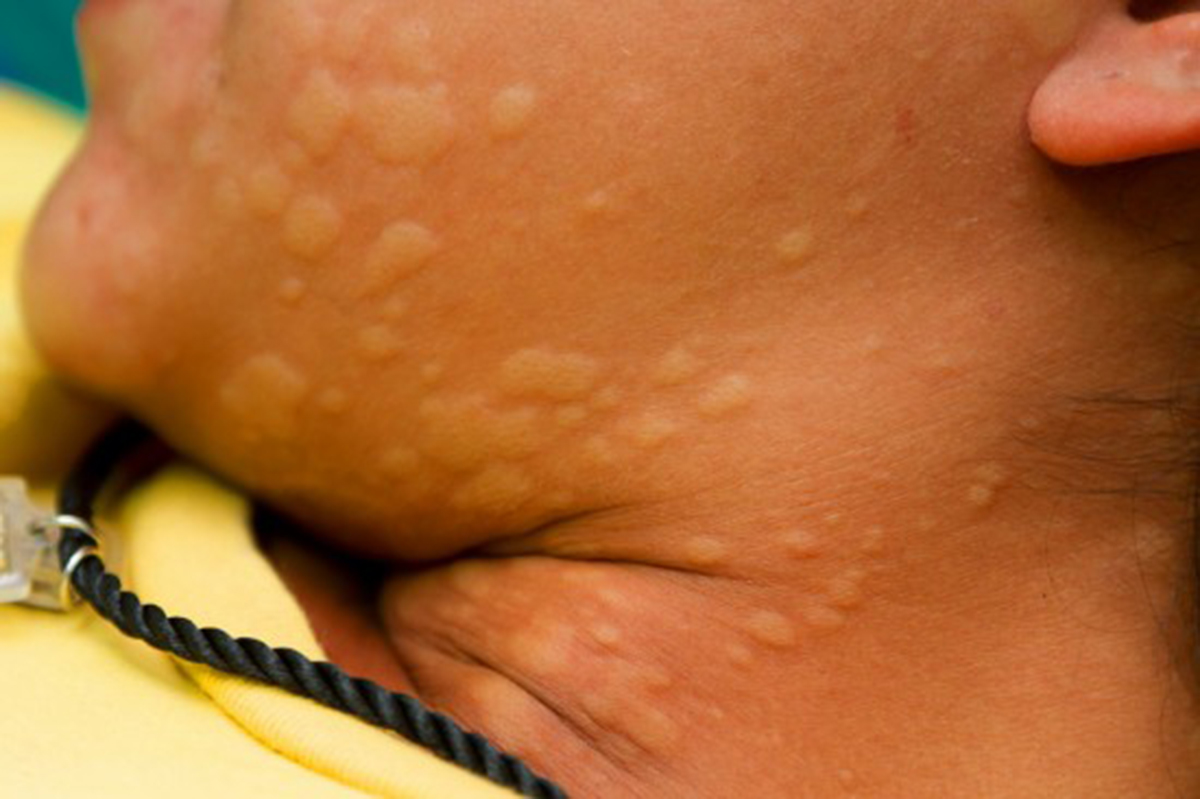Table of Contents
Hives
Acute hives can be present on your skin for up to six weeks, while chronic hives last even longer. Hives are raised, red bumps of various sizes that appear on your skin and usually subside on their own. They're often itchy and may look similar to (very inflated) mosquito bites. Hives could be localized all over the body, depending on the place where the allergen came into contact with the body, and depending on the cause.

Angioedema
Angioedema is a condition that can look similar to hives, but occurs deeper in the skin. Signs and symptoms of angioedema include large welts or swelling of the skin that may occur in the following locations:
- Near your eyes and lips
- On your hands
- On your feet
- On your genitalia
- Inside of your throat
When angioedema affects the throat, hindering your ability to breathe, it is a serious medical emergency.
Hereditary angioedema
Hereditary angioedema occurs in about 1 in 100,000 people. These patients lack an effective enzyme, which is associated with swellings of the face, throat or limbs. This type of angioedema is accompanied with several symptoms and the most common are:
* Sudden and severe swelling of your face, arms, legs, hands, feet, genitalia, digestive tract and airway
* Abdominal cramping as a result of digestive tract swelling
* Difficult or obstructed breathing due to swelling of your airway
Pathophysiology of the condition
Experts have proven that urticaria is caused by the release of several mediators such as histamine, bradykinins, kallikrein, or acetylcholine, resulting in intradermal edema from capillary and venous vasodilatation and occasional leukocyte infiltration.
There are two possible mechanisms that could be responsible for the urticaria and we will look at them now.
Immunologic mechanism
This mechanism is explained by the theory that all the manifestations of acute urticaria are caused by immunoglobulin E mediated hypersensitivity with histamine released from mast calls as its primary mediator. It also may be the result of the complement-mediated reactions or specific drug reactions.
Non-immunologic mechanism
There are several theories that tried to explain this type of urticaria. According to some experts, mediators can be released from mast cells without IgE and immunologic reaction. Some people have inherited weakness of the mast cells walls. Physical urticaria can be caused by the direct physical contact and without any immunologic reaction.
- www.mayoclinic.com/health/chronic-hives/DS00980
- www.clevelandclinic.org
- www.emedicine.com Photo by shutterstock.com

